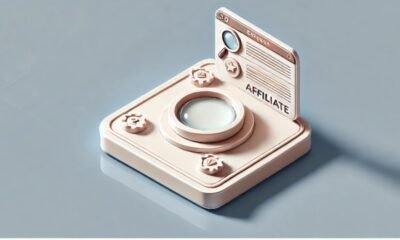Tech
How to Choose the Best Enclosure and Material for Your Electronic Device to Avoid a 30% Failure Risk

Figure 1: A decision flow for selecting the optimal material (Aluminum, Bronze, or Plastic) for your electronics enclosure, balancing heat dissipation, strength, and cost.
Introduction
Many hardware teams spend months perfecting PCB design and embedded system prototyping, only to encounter bottlenecks in the final step—finding a reliable “home” (the enclosure) for their creation. Failures such as overheating, signal interference, or damage during vibration during testing can lead to project delays or even complete failure.Engineers may be proficient in circuits but have limited understanding of the mechanical properties, thermal characteristics, and machining processes of different materials (such as bronze for cnc bronze processing or aluminum for aluminum cnc machining service).
This article serves as a bridge, providing a decision-making guide from an electronic engineer’s perspective, detailing how to select the most suitable Electronics Enclosure and manufacturing process for your PCB Design and Assembly. To make the wisest choice, we need to systematically understand several core issues.
Why an Electronics Enclosure is Far More Than Just a “Box”?
A high-quality Electronics Enclosure is a critical, multi-functional component that is fundamental to the reliability, safety, and user experience of a product. Far from being a simple box, it serves as an integrated platform for performance.
Primarily, it acts as a passive thermal management system. The thermal conductivity of its material—a key reason to select a professional aluminum cnc machining service—directly determines if heat from internal components (like CPUs or power amplifiers) can be dissipated effectively, preventing performance throttling or damage.
Secondly, the enclosure is a first line of defense against electromagnetic interference (EMI/RFI); its shielding effectiveness is crucial for passing FCC/CE certifications. It also houses all user-interface elements (buttons, indicators) and defines the product’s aesthetic. A common failure occurs when a high-performance Embedded System Prototyping board overheats in a poorly designed enclosure, nullifying the electronic design. For extreme requirements, materials suitable for cnc bronze offer excellent durability.
As emphasized by the IEEE, the integration of electronic and mechanical design is paramount for system-level success, where the package is as critical as the silicon inside. Therefore, selecting the appropriate enclosure material and design is the essential first step in creating a robust and reliable product.
Aluminum, Bronze, and Plastic: How to Choose the Champion Material for Your Project?

Figure 2: A radar chart providing a visual comparison of key properties for Aluminum, Bronze, and Engineering Plastics, aiding in objective material selection.
Selecting the best material for your project requires finding a balance between strength, weight, thermal conductivity, shielding, cost, and manufacturability. Below is an in-depth comparison of three mainstream materials.
Aluminum Alloy: The Balanced Champion for Heat Dissipation and Light Weight
As the core material for aluminum cnc machining service, aluminum alloy dominates electronics enclosures due to its exceptional strength-to-weight ratio and superior thermal conductivity. Its thermal dissipation capabilities—significantly higher than stainless steel or plastics—make it ideal for managing heat from high-power components like CPUs and GPUs. Acting as an integrated heat sink, it efficiently transfers heat from the PCB to the enclosure surface.
Additionally, aluminum provides inherent EMI shielding and accommodates complex geometries through CNC machining. According to ASM International (formerly American Society for Metals), aluminum alloys like 6061 offer optimal thermal performance for electronics thermal management . This combination of thermal efficiency, EMI protection, and manufacturing versatility makes aluminum the preferred choice for reliable Electronics Enclosure solutions.
Complete Comparison Table:
| Characteristic | Aluminum Alloy | Bronze (e.g., Phosphor Bronze) | Engineering Plastic (e.g., PEEK) |
| Strength | High strength, can be enhanced through heat treatment or cold working. | Very high strength, high hardness, and wear resistance. | Lower strength, but some engineering plastics like PEEK have high mechanical strength. |
| Weight | Low density (~2.7 g/cm³), light weight, about 1/3 that of iron or copper. | High density, heavy weight. | Lightest weight, low density, typically about 1/5 to 1/3 that of metals. |
| Thermal Conductivity | Excellent thermal conductivity, second only to silver, copper, and gold. | Good thermal conductivity, but generally not as good as aluminum alloy. | Very poor thermal conductivity, a poor thermal conductor. |
| EMI Shielding Effectiveness | Good conductivity provides effective electromagnetic shielding. | Good conductivity, excellent EMI shielding effectiveness. | Naturally an insulator, no inherent shielding; requires conductive fillers. |
| Cost | Moderate cost, good machinability, cost-effective. | Material cost is relatively high, especially bronzes containing rare elements like beryllium. | Raw material cost is usually high, but easy to form complex structures can reduce processing costs. |
| Key Characteristics Summary | Balanced comprehensive performance, preferred for light weighting and heat dissipation. | Focuses on high strength, wear resistance, corrosion resistance for special applications. | Lightweight, insulating, corrosion resistant, suitable where heat dissipation and shielding are not critical. |
| Typical Applications | Mobile phone/laptop cases, heat sinks, automotive components. | Springs, connectors, bearings, wear-resistant parts. | Lightweight structural parts, insulating brackets, corrosion-resistant enclosures. |
Bronze: The Performance King for Specialized Applications
Although not commonly used for large device enclosures, components manufactured via cnc bronze processes are indispensable in critical functional applications. Bronze alloys (like phosphor bronze, aluminum bronze) possess very high strength, exceptional wear resistance, and corrosion resistance. For example, bronze is irreplaceable in hinges requiring extreme wear resistance, connectors needing excellent conductivity and spark resistance, or sensor housings used in harsh marine environments. In-depth technical details about cnc machining bronze parts, such as how to overcome machining challenges and leverage their performance advantages, can be found in resources from professional providers of precision CNC machining services.
- In-Depth Analysis of Bronze Material Properties
The high density of bronze, while contributing to weight, also grants excellent structural rigidity and damping characteristics, helping to reduce vibration. Its corrosion resistance, especially stability in seawater environments, makes it ideal for marine electronic equipment and offshore platform devices.
- Balancing Bronze and Cost-Effectiveness
Although the material cost of bronze is high, in applications requiring long life, high reliability, and low maintenance costs, its total cost of ownership may be significantly lower than cheaper alternatives that require frequent replacement.
Engineering Plastics: Representatives of Economy and Design Freedom
- Cost and Insulation Advantages
The biggest advantages of plastic enclosures are their low raw material cost and the mass production cost benefits offered by injection molding. Their natural insulating properties also simplify circuit isolation design.
- Design and Machining Considerations
Plastics are suitable for creating appearance parts with complex curves and integrated structures. However, designers must consider their lower strength, susceptibility to aging, and poor heat dissipation capability, which often necessitates increasing wall thickness or adding reinforcing ribs.
Why CNC Machining is the Gold Standard for Precision Electronics Enclosure Manufacturing?
Among many manufacturing processes, CNC machining has become the gold standard for producing high-demand electronic enclosures due to its unparalleled precision, material adaptability, and reliability.
Unparalleled Precision and Consistency
Modern multi-axis cnc machining centers and advanced cnc machining tools can achieve micron-level tolerance control. This is crucial for ensuring perfect alignment of all enclosure parts—for example, guaranteeing the flatness of the cover and base for effective waterproof sealing, and ensuring precise alignment of screw holes to avoid assembly stress—thereby providing the most stable support for the delicate PCB design inside.
Agile Path from Digital Model to Physical Part
CNC machining perfectly aligns with the needs of Rapid Prototyping Services. Designers simply send 3D model files (like STEP files) to the manufacturer and can receive fully functional, high-precision prototypes with material properties consistent with the final product in a very short time. This is significantly faster than traditional mold development cycles, allowing teams to quickly verify designs and iterate, dramatically shortening time to market.
Quality Assurance and Industry Certifications
- Breadth of Material Compatibility
CNC machining can handle almost all metals and most rigid engineering plastics used for enclosures, offering great flexibility for design optimization, whether dealing with aluminum alloys, bronze, or specialty plastics like PEEK.
- Value of Certification Systems
For industries with strict regulations like medical, automotive, and aerospace, the manufacturer’s qualifications are paramount. Choosing a supplier certified to standards like IATF 16949 (Automotive), ISO 13485 (Medical Devices), and AS9100D (Aerospace) is a fundamental risk mitigation measure. Their comprehensive certification system ensures full-process control from material sourcing, production processes to final inspection, providing reliable quality assurance for critical applications.
From Design to Workshop: What are the Essential DFM (Design for Manufacturability) Rules to Follow?
Adhering to Design for Manufacturability (DFM) rules is key to ensuring your cnc machining parts can be produced efficiently and economically. Here are some practical rules for electronic enclosures:
- Maintain Uniform Wall Thickness:
Avoid warping and stress concentration caused by uneven cooling or shrinkage. A minimum wall thickness of no less than 1.5mm is recommended for metal enclosures. - Add Appropriate Fillets/Rounds:
Use fillets on all internal corners; this significantly reduces tool wear and stress concentration, enhancing part - Optimize Boss and Snap-Fit Design:
Provide sufficient pilot hole depth and wall thickness for self-tapping screws; consider appropriate draft angles and deformation space when designing snap-fits. - Design for Heat Dissipation and Shielding:
If a heat sink needs to be installed, design a reliable mounting surface and space; design suitable compression grooves for EMI shielding gaskets. - Consider Tool Accessibility:
Avoid designing cavities that are too deep and narrow, leaving enough space for CNC tool entry and movement. Early DFM communication with manufacturing partners can effectively avoid costly design changes and delays later.
Beyond Prototyping: How to Plan a Smooth Transition from First Article to Thousand-Unit Production?
Successful Rapid Prototyping Services is just the first step. Farsighted teams plan for a smooth transition to mass production during the prototyping phase.
After your design is validated via CNC prototypes, CNC machining itself remains a highly economical choice for small to medium batch production. This is because it requires no expensive mold investment and offers unparalleled flexibility for design changes. At this stage, close collaboration with the manufacturing partner to optimize tool paths and select more economical raw material specifications is crucial for cost control.
This strategy lays a solid foundation for potential very high-volume production in the future (e.g., switching to die-casting when volumes reach tens of thousands of units), as CNC-machined prototypes can directly serve as references for mold design, ensuring design intent remains consistent from start to finish. When selecting a Rapid Prototyping Services partner, assessing their capability to support production from small to medium batches is key to achieving a smooth transition.
Conclusion
Moving from a sophisticated PCB Design and Assembly to a robust and reliable Electronics Enclosure, selecting the right material and manufacturing process is the final critical barrier to product success. By understanding material properties, leveraging the unparalleled precision of CNC machining, and adhering to DFM principles, hardware teams can significantly reduce project risk and ensure their innovative products can withstand the tests of the real world.
Your next groundbreaking hardware idea deserves a perfect enclosure to match. This article is provided by the Tech Winks Technical Column, aiming to offer valuable engineering insights for hardware developers. If you need further professional support, it is advisable to consult precision manufacturing experts with stringent certifications like ISO 9001, IATF 16949, and AS9100D to obtain instant quotes and manufacturability analysis for your project, smoothing the path from prototype to production.
Author Bio
This article is provided by the precision manufacturing expert team at LS Manufacturing, which is an ISO 9001:2015, IATF 16949, and AS9100d certificated enterprise. They are committed to providing global hardware innovators with high-precision CNC machining solutions from rapid prototyping to small and medium-volume production, ensuring every idea is perfectly realized.
FAQ
Q1: For a high-power LED driver project, which is better for heat dissipation, aluminum or bronze?
A1: Aluminum alloy is usually the preferred choice due to its superior thermal conductivity and lightweight characteristics. Bronze is more focused on strength, wear resistance, and corrosion resistance, and would only be considered in small, specific scenarios requiring extremely high structural integrity or where the part acts as both a heat sink and structural component.
Q2: What is the minimum achievable wall thickness when CNC machining an electronics enclosure?
A2: For aluminum, the recommended minimum wall thickness is typically between 0.75mm and 1.0mm to ensure sufficient strength and avoid machining deformation. Thinner designs are possible but require evaluation based on the specific structure and material, which may increase cost and risk.
Q3: Can CNC machining be used directly for mass production of final products?
A3: Absolutely. For small to medium batch final products (from dozens to thousands of units), CNC machining offers significant advantages in quality, speed, and flexibility. When production volumes reach tens of thousands of units, consider using CNC to create molds first, then transition to high-volume processes like die-casting.
Q4: How can I ensure my enclosure design effectively shields against electromagnetic interference (EMI)?
A4: Selecting a conductive material like aluminum alloy is key. The design must ensure continuous metal contact between different parts of the enclosure, use conductive gaskets, and pay attention to aperture sizes. CNC machining can achieve high-precision mating surfaces, which is fundamental for ensuring good EMI shielding.
Q5: What is the typical lead time from submitting design files to receiving the first CNC machined prototypes?
A5: This depends on the complexity and quantity of the design. For typical electronics enclosure projects, many service providers can complete the first article machining and delivery within 3-7 working days. Conducting a Design for Manufacturability (DFM) review in advance can effectively avoid delays.
-

 Tech1 year ago
Tech1 year agoHow to Use a Temporary Number for WhatsApp
-

 Business2 years ago
Business2 years agoSepatuindonesia.com | Best Online Store in Indonesia
-

 Social Media1 year ago
Social Media1 year agoThe Best Methods to Download TikTok Videos Using SnapTik
-

 Technology1 year ago
Technology1 year agoTop High Paying Affiliate Programs
-

 Tech10 months ago
Tech10 months agoUnderstanding thejavasea.me Leaks Aio-TLP: A Comprehensive Guide
-

 FOOD1 year ago
FOOD1 year agoHow to Identify Pure Desi Ghee? Ultimate Guidelines for Purchasing Authentic Ghee Online
-

 Instagram3 years ago
Instagram3 years agoFree Instagram Auto Follower Without Login
-

 Instagram3 years ago
Instagram3 years agoFree Instagram Follower Without Login




















